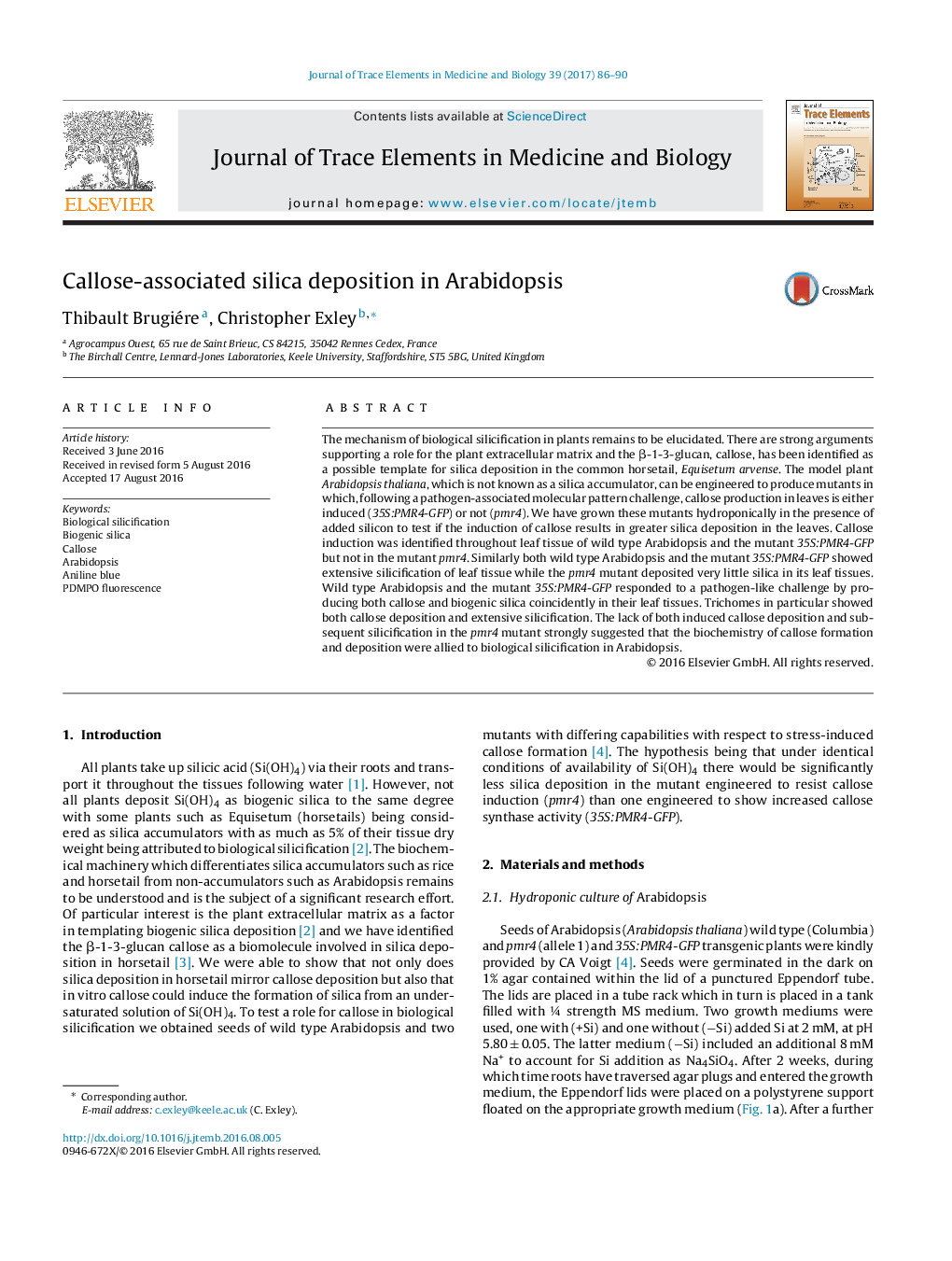| کد مقاله | کد نشریه | سال انتشار | مقاله انگلیسی | نسخه تمام متن |
|---|---|---|---|---|
| 1226323 | 1494817 | 2017 | 5 صفحه PDF | دانلود رایگان |
The mechanism of biological silicification in plants remains to be elucidated. There are strong arguments supporting a role for the plant extracellular matrix and the β-1-3-glucan, callose, has been identified as a possible template for silica deposition in the common horsetail, Equisetum arvense. The model plant Arabidopsis thaliana, which is not known as a silica accumulator, can be engineered to produce mutants in which, following a pathogen-associated molecular pattern challenge, callose production in leaves is either induced (35S:PMR4-GFP) or not (pmr4). We have grown these mutants hydroponically in the presence of added silicon to test if the induction of callose results in greater silica deposition in the leaves. Callose induction was identified throughout leaf tissue of wild type Arabidopsis and the mutant 35S:PMR4-GFP but not in the mutant pmr4. Similarly both wild type Arabidopsis and the mutant 35S:PMR4-GFP showed extensive silicification of leaf tissue while the pmr4 mutant deposited very little silica in its leaf tissues. Wild type Arabidopsis and the mutant 35S:PMR4-GFP responded to a pathogen-like challenge by producing both callose and biogenic silica coincidently in their leaf tissues. Trichomes in particular showed both callose deposition and extensive silicification. The lack of both induced callose deposition and subsequent silicification in the pmr4 mutant strongly suggested that the biochemistry of callose formation and deposition were allied to biological silicification in Arabidopsis.
Journal: Journal of Trace Elements in Medicine and Biology - Volume 39, January 2017, Pages 86–90
